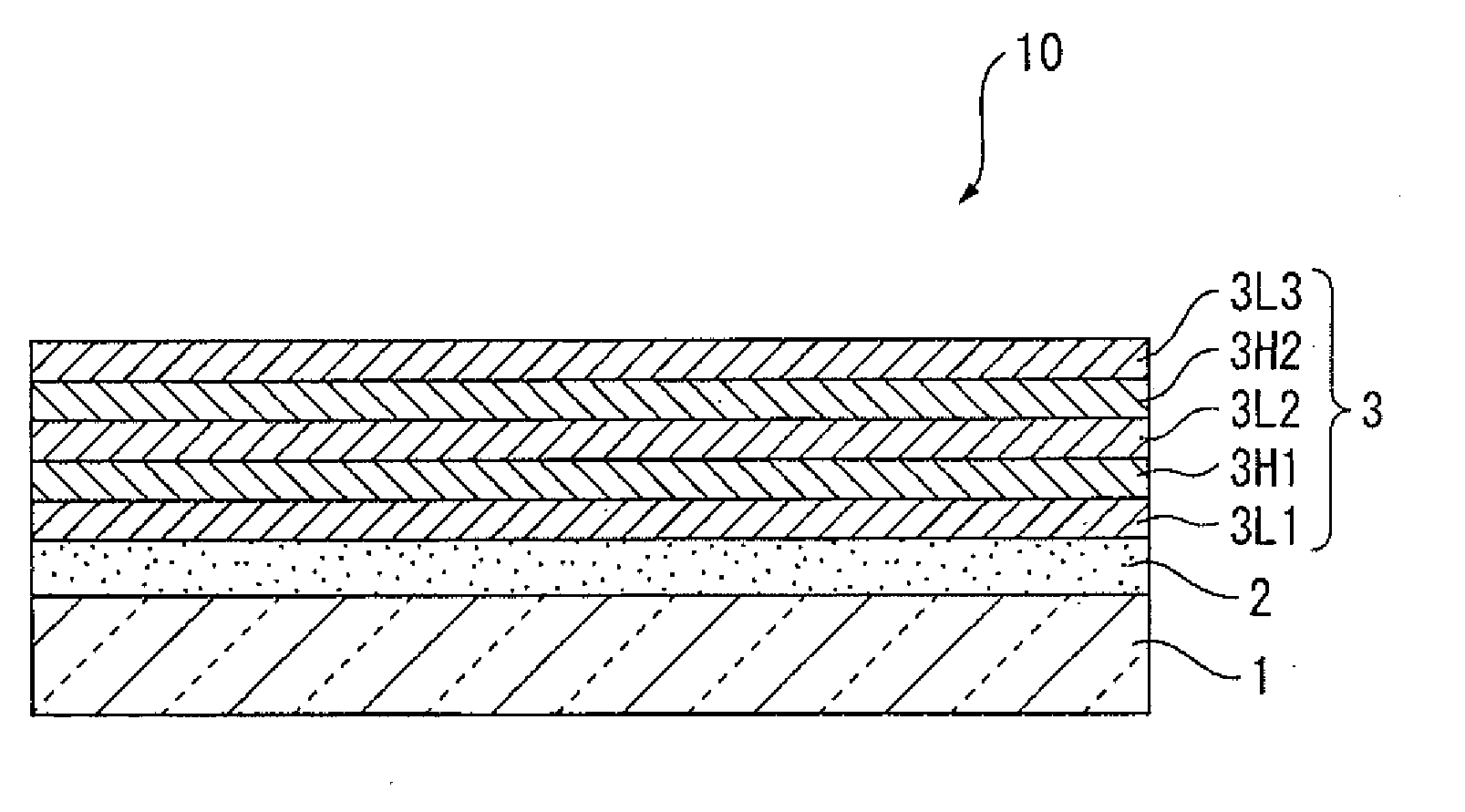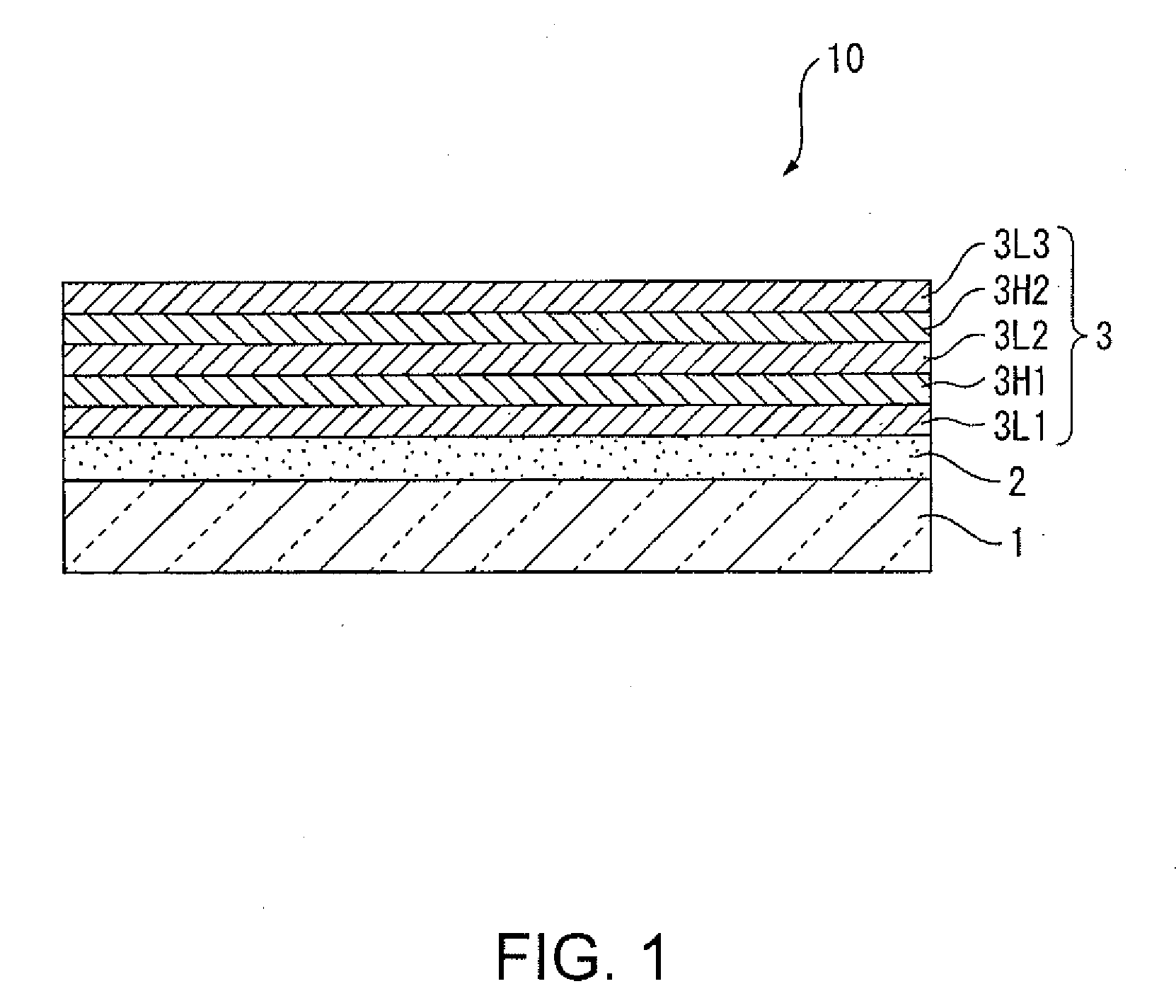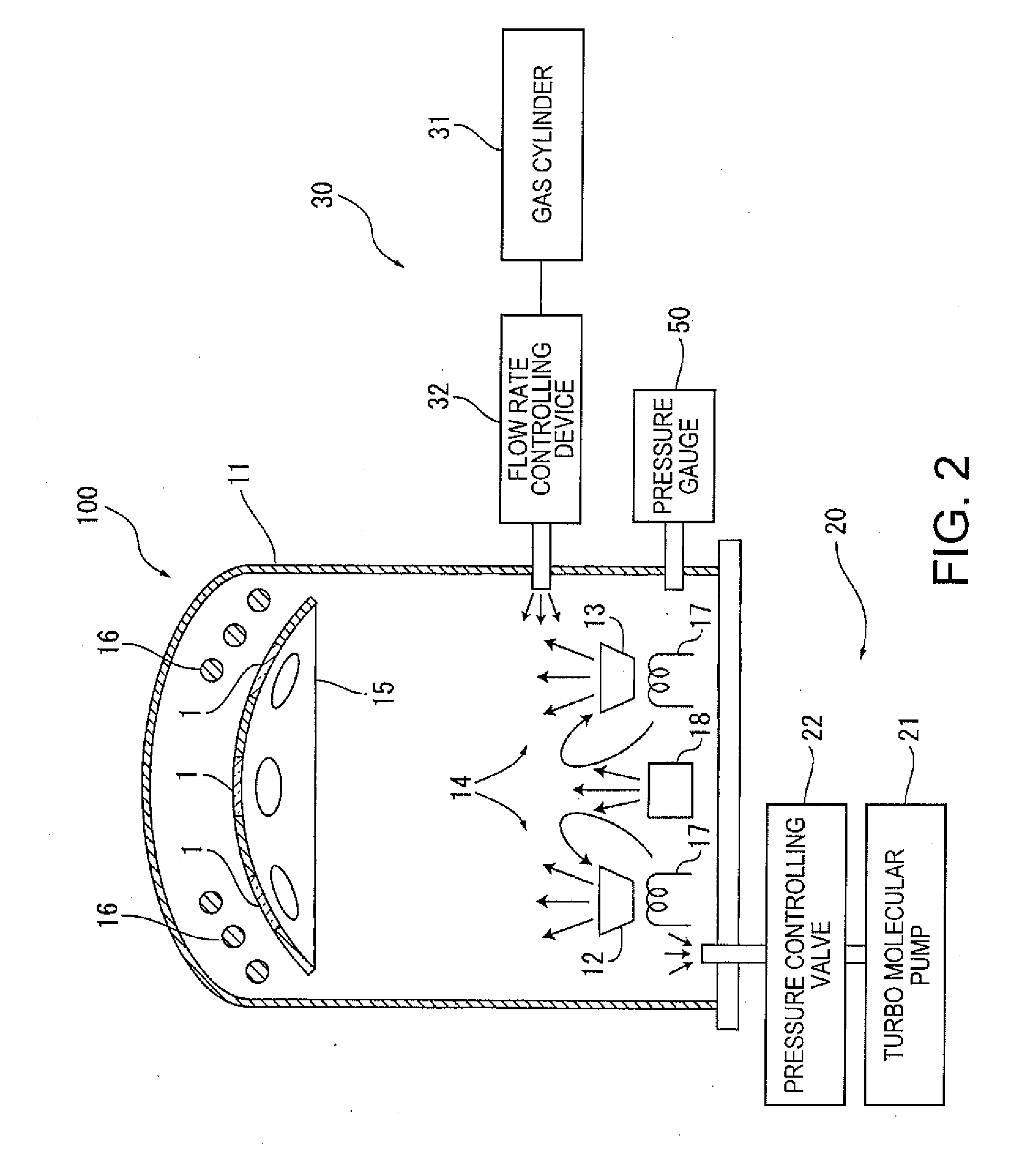Multilayer Antireflection Layer, Method for Producing the Same, and Plastic Lens
a multi-layer anti-reflection and lens technology, applied in the field of multi-layer anti-reflection layer, method for producing the same, and plastic lens, can solve the problems of reducing the scratch resistance, the lens for spectacles disclosed, and still insufficient scratch resistance, and achieves excellent scratch resistance, low environmental load, and the effect of increasing the density of the high refractive index layer
- Summary
- Abstract
- Description
- Claims
- Application Information
AI Technical Summary
Benefits of technology
Problems solved by technology
Method used
Image
Examples
example 1
[0066]A plastic lens for spectacles (Seiko Prestige, produced by Seiko Epson Corporation) having a substrate 1 having formed thereon a primer layer and a hard-coat layer 2 was used.
[0067]The plastic lens was degassed in the first chamber, which was not shown in the figure, set at a temperature of 60° C., and was subjected to ion cleaning for 2 minutes in the second chamber (vacuum deposition apparatus 100) under conditions of an acceleration voltage of 500 V, an acceleration current of 250 mA, a bias current of 380 mA and a flow rate of an oxygen introducing gas of 20 sccm.
[0068]The treatments were performed for cleaning the surface of the substrate, thereby enhancing adhesion between the substrate and the antireflection film.
[0069]The second chamber was then evacuated to high vacuum with a vacuum degree of 6.0×10−4 Pa, and silicon oxide was vapor-deposited as the first layer. Thereafter, a zirconium oxide layer was deposited as the second layer by ion assisted vapor deposition at a...
example 2
[0075]The same procedures as in Example 1 were performed except that the conditions for ion assisted deposition for forming zirconium oxide layers as the second and fourth layers were changed to an acceleration voltage of 600 V, an acceleration current of 250 mA, a bias current of 375 mA, which was 1.5 times the acceleration current, and 20 sccm of oxygen gas introduced.
[0076]The period of time required for the sequence of operations for forming the layers, i.e., the operations of from degassing operation in the first chamber through formation of an antifouling layer on the opposite surface, was 45 minutes.
example 3
[0077]The same procedures as in Example 2 were performed except that the vacuum degree in the second chamber upon starting formation of layers was changed to 1.5×10−4 Pa.
[0078]The period of time required for the sequence of operations for forming the layers, i.e., the operations of from degassing operation in the first chamber through formation of an antifouling layer on the opposite surface, was 4 hours.
PUM
| Property | Measurement | Unit |
|---|---|---|
| Nanoscale particle size | aaaaa | aaaaa |
| Particle diameter | aaaaa | aaaaa |
| Time | aaaaa | aaaaa |
Abstract
Description
Claims
Application Information
 Login to View More
Login to View More - R&D
- Intellectual Property
- Life Sciences
- Materials
- Tech Scout
- Unparalleled Data Quality
- Higher Quality Content
- 60% Fewer Hallucinations
Browse by: Latest US Patents, China's latest patents, Technical Efficacy Thesaurus, Application Domain, Technology Topic, Popular Technical Reports.
© 2025 PatSnap. All rights reserved.Legal|Privacy policy|Modern Slavery Act Transparency Statement|Sitemap|About US| Contact US: help@patsnap.com



